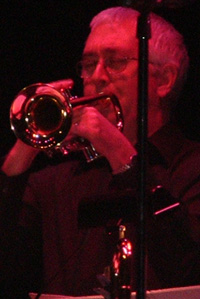Don't see what you're looking for?
Main Site
Berklee.eduCampuses and Schools

Phil Person
For media inquiries, please contact Media Relations
- Leader of the Phil Person Sextet, Quintet, and Quartet
- Member of the Artie Shaw Orchestra, White Heat Swing Orchestra, Swing Legacy, and Duke Belaire Jazz Orchestra
- Performances with Al Grey, Buddy Defranco, Tony Bennett, Keely Smith, Jack Jones, Scott Hamilton, Dick Johnson, Phil Wilson, Kay Starr, Steve Lawrence and Eydie Gorme, Margaret Whiting, the Tommy Dorsey Orchestra (directed by Buddy Morrow), Alan Dawson, Ricky Ford, Howard Johnson, and Ray Santisi, among others
- Recordings include the Phil Person Sextet’s Personology, the New England Jazz Ensemble’s Version 3.0 and Storm Before the Calm, and Swing Legacy’s Dancing on a Blue Moon
- Alumnus, Pacific Lutheran University
- Diploma, Berklee College of Music
"I teach all levels of Ear Training: 1,2, 3, and 4, and Solfége 1 and 2. I get a lot of repeat customers. It's nice to watch students' progression. One of our goals in the Ear Training Department is to expand the scope of what students are capable of hearing, giving them the ability to hear more complicated melodies and chord progressions; and to help them with their dictation skills."
"It's an essential element of a musician to have good ears. If they're not necessarily born with good ears, it's important for them to at least expand what they're capable of hearing. For obvious reasons, to be a musician, you have to be able to hear things: melodies, harmonies, and rhythms. It's like being able to speak."
"Students' reading skills are sharpened in ear training because you do a lot of reading. They'll increase their vocabulary of melodies, intervals, harmonies, and rhythms, and it all goes hand in hand. It helps a person in a groove or ensemble setting be able to deal with whatever is thrown at them, be it complicated rhythms or harmonies—not only being able to perform them but actually hearing it in their head, hearing it and understanding what it is, recognizing it. Everything is intertwined."
"I don't like an uptight atmosphere. I try to approach things with a nice amount of good humor, so I have my little repertoire of jokes that I make. But I also try to make it clear right away what I expect from students. We're all covering the same material in Ear Training; there are workbooks for every level. We basically work through everything systematically, and each chapter builds on the previous chapter. I try to make it somewhat fun for them even though there's a lot of work that they have to get through. I aim to sharpen and expand their skills as they go along."
